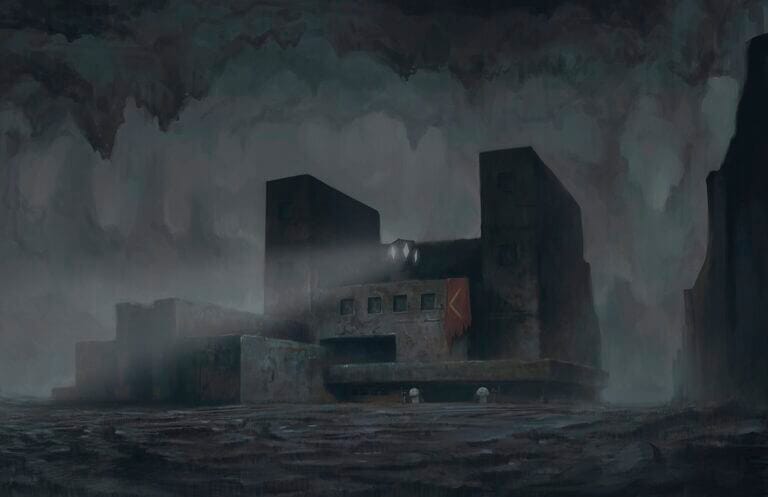Guide to Running Drow Party Dynamics

In Rise of the Drow: After the Fall, managing drow party dynamics becomes one of the most compelling—and challenging—parts of running the game. The characters begin as survivors in the shattered city of Holoth, now reshaped into Hopeholme under Coalition occupation. Unlike traditional adventures where party unity is assumed, this setting thrives on division, intrigue, and personal ambition. But when every player has secrets—and some have orders from rival drow houses or the Coalition itself—how do you keep the game from devolving into party-destroying chaos?
This guide explores how to manage and embrace drow party dynamics while maintaining a compelling, cooperative story. Whether your players are Driders, exiles, rebels, loyalists, or aspiring tyrants, they can pursue individual goals while still working toward the group’s survival.
Learn more about Aventyr Adventures and Rise of the Drow: After the Fall.
Want to explore the Underdark further? Check out the Mini-Dungeon Tome II for drow-themed one-shots and adventures.
1. Set Expectations in Session Zero: Foundations of Drow Party Dynamics
From the start, be clear: After the Fall is a cooperative game of distrust. Characters don’t need to be friends, but they must depend on one another to survive. Encourage:
- Open player discussion (not character discussion) about the tone: political, tragic, morally grey.
- Boundaries around PvP: Intrigue is welcome; surprise stabbing is not.
- Player buy-in: Everyone agrees that the party is more important than any single betrayal.
Tip: Use private notes or secret objectives to empower intrigue without requiring players to act on it immediately.
2. Define Shared Stakes: Surviving Together Despite House Loyalties
Hopeholme is dangerous. The Coalition is stronger, more organized, and fully entrenched. Even if the characters hate each other’s houses, they must band together or face death, captivity, or mind-breaking reeducation.

Ask players to define:
- What does their character fear most: exile, failure, losing their house?
- What would make them risk cooperation with an enemy?
- Who might they trust just enough to fight beside?
Tip: Offer party-wide objectives, like rescuing prisoners or sabotaging a Coalition wardstone, that force collaboration and test drow party dynamics.
3. Play Up House Loyalties without Breaking the Party
Drow society is built on rivalries. Let characters pursue house agendas—but make advancement require subtlety and timing.
Examples:
- A character loyal to their drow house tries to steal an artifact to regain favor—but doing so alone would be suicide.
- A Drider sent by her matron mother secretly works to destabilize the Coalition—but can only complete her task if the party infiltrates a secure location.
- A loyalist secretly reports on the others’ actions—but increasingly comes to question their orders.
Allow partial success. A character may gain house favor by manipulating outcomes without sabotaging the entire group.
4. Introduce the Consequences of Betrayal in Drow Party Dynamics
If players turn on one another too soon, they all lose. Make this clear in-world.

- NPCs might warn, “The Coalition doesn’t care whose dagger struck first. They’ll hang you all.”
- Failed missions weaken resistance morale or increase Coalition control.
- Escalating distrust causes party penalties (e.g., failed group checks or exposure of their hideout).
Betrayal is most impactful when it costs something. If a player reveals a secret too early, they might gain short-term house favor—but lose critical party support.
5. Reward Cooperation Through Strategy and Intrigue
Make it mechanically and narratively rewarding to work together:
- Use the environment: One character holds off Coalition guards while another deciphers a magical lock.
- Create combo objectives: A rebel needs sabotage planted by a loyalist’s contact. A ruler needs a rebel’s chaos as cover.
- Introduce political NPCs who respond better when the party appears united.
A party that argues but succeeds is far more compelling than one that fractures entirely—and it highlights the strengths of drow party dynamics.
6. Embrace Secrets, Lies, and Shifting Alliances in Drow Campaigns
Give players coded missions, secret house objectives, and moral dilemmas. But tie those missions to moments where cooperation is necessary.

Encourage:
- Secret side goals revealed at dramatic moments.
- Party votes on key decisions (e.g., kill a Coalition leader or use them as leverage?).
- NPCs who sow division or test loyalties.
Example: A captured Coalition guard claims to have a map of a secret prison—but will only give it to someone from a noble house. Who steps up?
Final Thoughts: Conflict with Purpose
In After the Fall, tension is the story. But tension doesn’t have to mean dysfunction. With the right tools, your players can explore drow party dynamics, betrayal, loyalty, and ambition in a way that strengthens the narrative.
Make every choice matter. Make every betrayal cost something. And always bring the focus back to this truth:
Only together can the drow survive the Fall.
Explore more of the Rise of the Drow universe.
Rise of the Drow: After the Fall 🕷️
The City Has Fallen — Will You Rebuild, Rebel, or Rule?
The mighty drow city of Holoth lies in ruin, its elegant towers shattered, its streets filled with conflict and opportunity. The Coalition’s brutal occupation tightens its grip, but beneath the watchful eyes of their guards, power shifts in the shadows.
You are drow. Now is your chance to take the power back.
Darkness Rises, and the Time is Now…
Align with House AAW and be the first to uncover new quests, ancient powers, and revelations from the Underworld.



